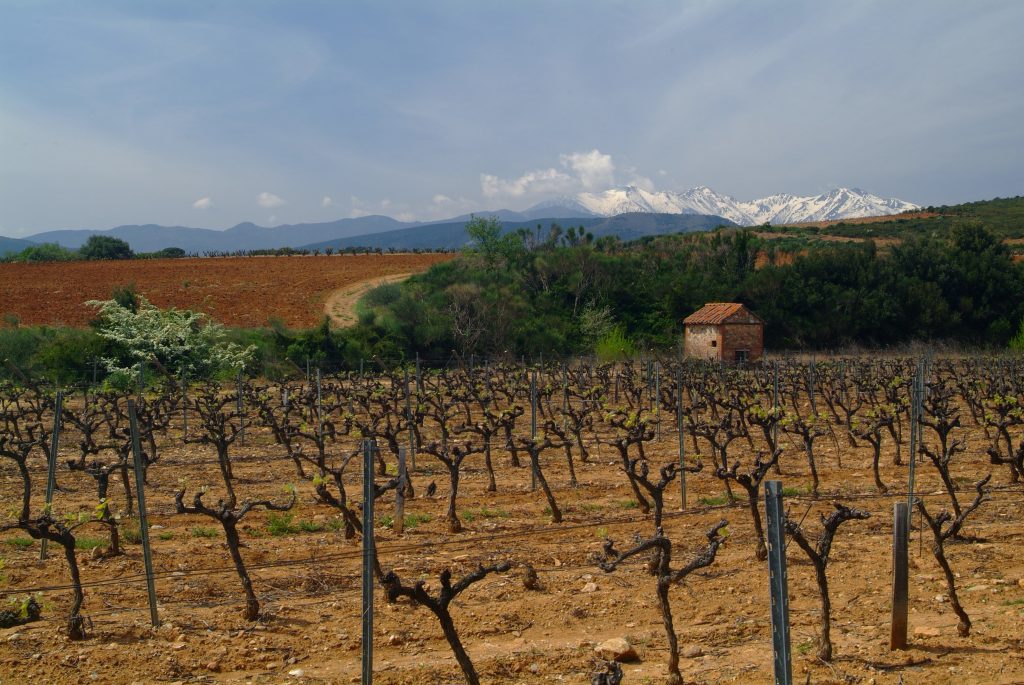Turning data into drought resilience: the winning strategy of Domaine Cazes
As climate change intensifies and water restrictions tighten, irrigation has become a crucial issue for winegrowers. The Roussillon region is a striking example of this challenge: between 2022 and 2024, the area endured three consecutive years of severe drought, testing the resilience of its vineyards.
In 2022 and 2023, the region recorded historically low rainfalls, with less than 250 mm per year —making Perpignan’s climate more akin to that of Tunis than southern France. Even in 2024, with about 400 mm of rain, the figures remained below average, which typically ranges between 500 and 650 mm. The cumulative deficit over three years has been unprecedented.
According to the French Bureau of Geological and Mining Research (BRGM), despite some improvement late in 2024, groundwater levels remain alarmingly low as of March 2025.
For winegrowers, the impact has been severe, with yields dropping by as much as 30 to 50% in some areas, leaving the entire industry vulnerable. Given these challenges, sticking to traditional methods is no longer an option. Winegrowers must now evaluate every factor that influences their success and adapt practices and strategies to the changing climate.

The Importance of the first irrigation
Aurélie Mercier, Technical Director at Domaine Cazes (Advini group) in Roussillon, emphasizes that irrigation decisions must be based on multiple sources of information. “ “With water restrictions and drought conditions persisting for the past three years, we cannot afford to waste a single drop. To ensure efficient irrigation, we integrate a variety of tools and methods, including Vintel®’s decision support system (DSS), the pressure chamber, soil tensiometers, and visual indicators such as shoot length and apex monitoring. The key is cross-referencing these data sources to make well-informed decisions.”
At Domaine Cazes, where 100 hectares out of 300 are irrigated, the timing of the first irrigation is crucial. In 2024, for the first time, irrigation was triggered before budbreak due to historically low soil water reserves. “The soil was completely dry, no sap was dripping from pruning cuts and growth was blocked. “ . This lack of soil moisture can cause harmful conditions known as “delayed spring growth“, where dehydrated dormant buds struggle to reconnect with the vine’s vascular system. Without sufficient sap flow to repair winter embolisms and rehydrate buds, shoots may experience stunted growth, wilting, and, in severe cases, fruit abortion. By irrigating before budbreak, Domaine Cazes aimed to restore soil moisture early enough to prevent these issues and support healthy vine development.
“In 2024, for the first time, irrigation was triggered before budbreak. The soil was completely dry, no sap was dripping from pruning cuts and growth was blocked. “
With increasing restrictions on water use, precision becomes even more critical. “Due to water restrictions we can irrigate only five hectares per day, meaning the same plot will not receive irrigation more than once in 2-3 weeks. This means that we need to adjust our irrigation frequency and volume based on what is practically feasible and optimize our choices” says Mrs. Mercier.
The Role of Decision Support Systems Tools like Vintel® provide a significant advantage by modeling soil water availability, vine stress, and helping viticulturists anticipate depletion trends. “One of the most valuable features of Vintel® is its ability to track the dynamics of water loss in the soil’s Available Water Content (AWC). This allows us to plan and avoid critical stress levels,” explains Mercier.
“Due to irrigation restrictions, we can irrigate only five hectares per day, meaning the same plot will not receive irrigation more than once in 2-3 weeks. This means that we need to adjust our irrigation frequency and volume based on what is practically feasible”.

The key to a successful strategy
By comparing data from Vintel® with real-time field measurements, Domaine Cazes has been able to refine its irrigation strategy to meet both wine production goals and quality standards, even in challenging years. Whether producing structured red wines or fresh white wines, fine-tuning irrigation ensures the right balance between vine water stress and grape quality, allowing the domaine to maintain both high-quality yields and steady production despite the tough conditions.
For those starting with decision support system and Vintel®, Aurélie Mercier advises comparing multiple data sources at the beginning and calibrating models using pressure chambers to adjust parameters to match simulations in each reference plot, ensuring the accuracy of future predictions.
“With Vintel®, I can monitor changes in soil moisture in real time, which helps me anticipate each plot’s water needs and plan interventions more effectively”.
In the face of increasing climate unpredictability, leveraging technology and real-time monitoring is no longer an option—it is a necessity. Vintel® provides the insights needed to navigate these challenges, ensuring that each drop of water contributes to both vineyard sustainability and wine quality.
Contattaci e richiedi una demo


